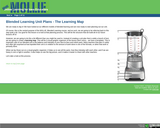
Creating a Blended Learning Unit Map
- Subject:
- Education
- Material Type:
- Activity/Lab
- Reading
- Provider:
- AEA
- Provider Set:
- OLLIE
- Author:
- Evan Abbey
- Date Added:
- 12/03/2018

Creating a Blended Learning Unit Map

This course was created using Articulate Rise. It is targeted towards K-12 teachers with migrant students in their classroom. It provides instructional strategies for culturally responsive teaching.

Learn how instructional designers use data to inform the creation of a Learning Persona. Learning Personas help determine the needs of the training and help ...
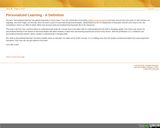
Definition of Personalized Learning
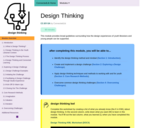
This module provides broad guidelines surrounding how the design experiences of youth librarians and young people can be supported.

Our purpose in this book is twofold. First, we introduce the basic skill set and knowledge base used by practicing instructional designers. We do this through chapters contributed by experts in the field who have either academic, research-based backgrounds, or practical, on-the-job experience (or both). Our goal is that students in introductory instructional design courses will be able to use this book as a guide for completing a basic instructional design project. We also hope the book is useful as a ready resource for more advanced students or others seeking to develop their instructional design knowledge and skills.
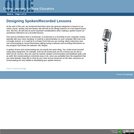
Designing Spoken/Recorded Lessons
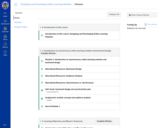
This course, in true meta fashion, is a series of asynchronous online learning modules with a goal of teaching you how to design and develop asynchronous online learning modules. These asynchronous online learning modules can be used in any number of situations, ranging from training colleagues in a company professional development setting to teaching a college course to offering a Massive Open Online Course (MOOC).
This course is split into five modules:
1) Introduction to asynchronous online learning modules and backward design
2) Learning Objectives and Bloom's Taxonomy
3) Assessments
4) Learning Resources
5) Canvas, Module Organization, and the "Connective Tissue"
Overall learning objectives:
- Use instructional design principles and best practices to design an effective learning module;
- Design assessments that allow you – and the learners themselves – to measure whether your learners have mastered the skills and concepts you consider important;
- Curate and create learning resources to guide your learners in gaining mastery of skills and concepts;
- Present your learning module asynchronously in a logically organized and explained manner;
- Code your learning module into the Canvas Learning Management System for your learners to access.
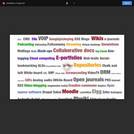
Podcast on curriculum design for e-learning
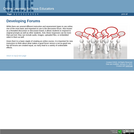
Developing Forums
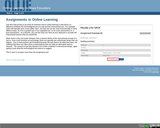
Developing Online Assignments

The Edinburgh Learning Design Roadmap (ELDeR), created in 2016, is a practical, team-based approach to learning design, based on the University of Northampton’s CAIeRO approach. ELDeR also incorporates elements of other learning design tools and approaches, including the Open University’s Curriculum Feature cards, the University of Ulster’s Viewpoints toolkit, and University College London’s ABC method.
These open resources can be used to facilitate collaborative workshops, which will enable academic teams to develop a detailed blueprint of their learning design, together with a comprehensive action plan.
Acknowledgements
A number of University of Edinburgh colleagues past and present have contributed to the development and refinement of the ELDeR approach and materials including Cathy Bovill, Lorna M. Campbell, Lizzy Garner-Foy, Susan Greig, Fiona Hale, Kelly Hall, Melissa Highton, Jon Jack, Lesley Kelly, Neil Lent, Tracey Madden, Jenna Mann, Celeste McLaughlin, Stuart Nicol, Jenny Scoles, and Elliott Spaeth.
Licence
The ELDeR Planner, The University of Edinburgh, 2020, is adapted from The CAIeRO Planner, University of Northampton, ABC Learning Design by Clive Young and Nataša Perović, University College London, the Open University Learning Design tools and principles, and Viewpoints Curriculum Design, University of Ulster, and is similarly licensed under a Creative Commons Attribution NonCommercial ShareAlike 4.0 International License.
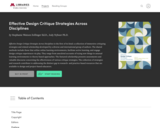
Effective Design Critique Strategies Across Disciplines is the first of its kind: a collection of immersive critiquing strategies and related scholarship developed by a diverse and international group of authors. The shared methods include those that utilize online learning environments, facilitate active learning, and engage design critique experiences via play. They range from anecdotal accounts of trying new things in unusual learning environments to theory-based approaches. The featured scholarship presents assessments and valuable discourse concerning the effectiveness of various critique strategies. The collection of strategies and research contribute to addressing the distinct gap in research- and practice-based resources that are available to design and project-based educators.
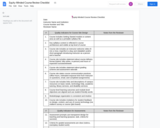
A short course review checklist for college-level courses. Building on the OSCQR Rubric and the Peralta Online Equity Rubric, this checklist integrates strategies for Universal Design for Learning, Culturally Responsive Teaching, and Open Pedagogy. It includes Quality indicators for Course Site Design, Assessments, Course Activities and Content, and Course Accessibility. It is intended to support meaningful consultation between subject matter experts and instructional designers. This resource is developed for Open Oregon Educational Resources.

An overview of the importance of equity in learning models used for Instructional Design.
Footage: Canva
Music: The Monuments and Tunnels in Goa and Hampi - Bail Bonds
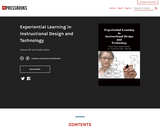
The purpose of this text is to provide students with an introduction to the field of Instructional Design and building upon skills that will help the novice designer become more effective in their professional career. This text will go beyond theory to discuss such topics as recommended skillsets and traits for designers, the importance of cultivating strong communication and leadership skills and how to incorporate emotional intelligence into your wheelhouse of professional skills. In addition, tips on the management of projects as well as the instructional design process will be discussed. In an effort to broaden the concept of the instructional design profession, you will find sections devoted to instructional design in various professional venues, (i.e., consulting, educational {higher education and K-12}).
In the educational realm of instructional design, one current topic among designers is how to incorporate openly licensed material into instructional texts. We will provide a section on open educational resources and licensing to assist you in becoming knowledgeable on best practices and dealing with cutting edge initiatives in the educational world.
Effective instructional designers should be able to speak comfortably in public in various venues whether it is a business meeting, training a small group of individuals, or, presenting at a large conference. For an instructional designer, it is important to hone these leadership skills and prepare yourself for the inevitable public speaking situation. This text will provide information on how to improve upon your public speaking skills.

Learn about Sakichi Toyoda's Five Why strategy and how it can be applied by you!
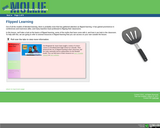
Flipped Learning

This book received the 2018 AECT Outstanding Book Award!
"What is this field?" "Where have we come from as a discipline, and where are we going?" "What do I want to study?" These and other questions are typical for new students in the field of Learning and Instructional Design Technology. This textbook is designed to help answer these questions and provide the quickest route to understanding the history and current trends in the field. After surveying classic theories and writings, as well as more recent applications of theory and practice, students will be better prepared to chart their own course and careers within the discipline. This book is designed to support foundations courses common in departments, as well as seminars on current trends and issues.

This OER SPH 106 course template was developed by Ms. Patricia Connell (faculty) in collaboration with Dawn Dunaway (Instructional Designer), as part of the ACHE OER Grant program. Both course developers are from Gadsden State Community College. Ms. Connell is an experienced communications instructor with over 35 years of experience teaching students the fundamentals of communication. Ms. Dunaway is an Instructional Designer, certified Quality Matters Master Course Reviewer, and Creative Commons Certified Educator with over a decade of experience in andragogy and course development. The combined experience and skill set of the creators of this SPH 106 OER course ensure grounded confidence that you will provide a high-quality learning experience for your students using this course design framework and instructor’s guide.
Using a fully designed course template allows you to focus on providing teacher presence and Regular Substantive Interaction (RSI) with your students throughout the course. This Quality by Design course template includes best practices based on the Quality Matters Rubric Higher Ed. Rubric, and Open SUNY Quality Course Review Rubric (OSCQR Rubric) standards to ensure that both you and your students focus on the course content and learning - and not course design. Simplicity and consistency in this course provide high-quality learning experiences for your students that are easy for students to successfully achieve the learning objectives, and easy for you to instruct. The purpose of this guide is to provide you with step-by-step support throughout your SPH 106 OER Quality by Design course template Instructor experience. Course Learning Activities and Assessments are aligned with the Alabama Community College System (ACCS) Transfer Syllabus for Fundamentals of Communication (SPH 106). Course Design is aligned with the Quality Matters and Online SUNY Course Quality Review Rubric standards for embedding Regular Substantive Interaction into the course design.